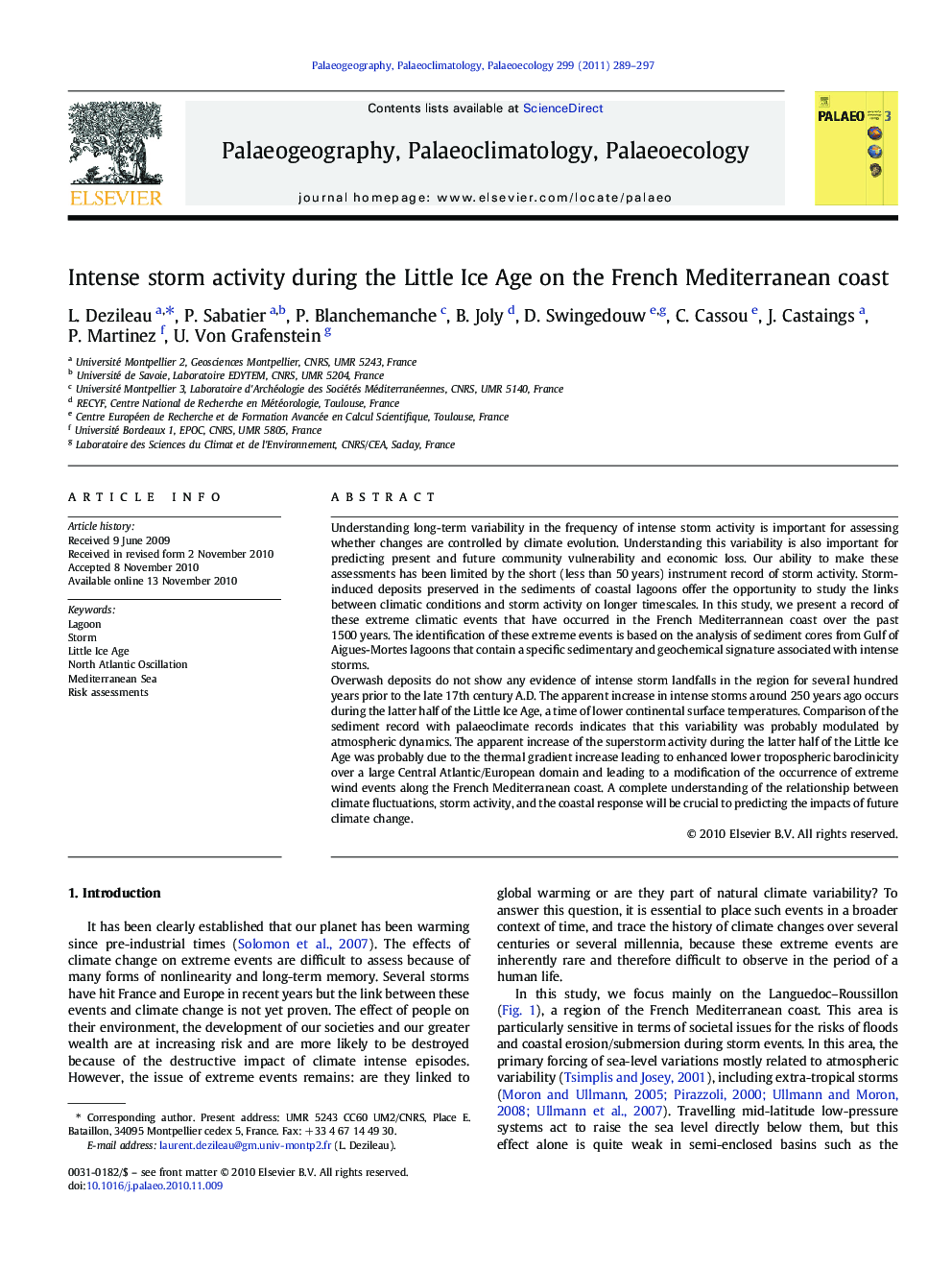| Article ID | Journal | Published Year | Pages | File Type |
|---|---|---|---|---|
| 6350702 | Palaeogeography, Palaeoclimatology, Palaeoecology | 2011 | 9 Pages |
Abstract
Overwash deposits do not show any evidence of intense storm landfalls in the region for several hundred years prior to the late 17th century A.D. The apparent increase in intense storms around 250Â years ago occurs during the latter half of the Little Ice Age, a time of lower continental surface temperatures. Comparison of the sediment record with palaeoclimate records indicates that this variability was probably modulated by atmospheric dynamics. The apparent increase of the superstorm activity during the latter half of the Little Ice Age was probably due to the thermal gradient increase leading to enhanced lower tropospheric baroclinicity over a large Central Atlantic/European domain and leading to a modification of the occurrence of extreme wind events along the French Mediterranean coast. A complete understanding of the relationship between climate fluctuations, storm activity, and the coastal response will be crucial to predicting the impacts of future climate change.
Related Topics
Physical Sciences and Engineering
Earth and Planetary Sciences
Earth-Surface Processes
Authors
L. Dezileau, P. Sabatier, P. Blanchemanche, B. Joly, D. Swingedouw, C. Cassou, J. Castaings, P. Martinez, U. Von Grafenstein,
